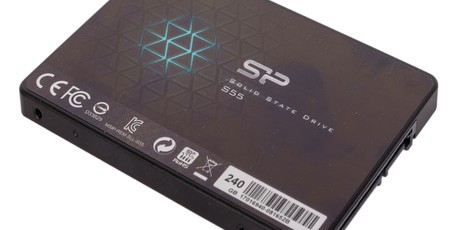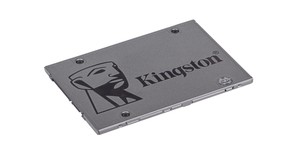
Manufacturer: Silicon Power
UK price (as reviewed): £73.48 (inc. VAT)
US price (as reviewed): $75.99 (exc. tax)
The 2.5” SSD market is largely stagnant in terms of features and speed, as the limits of the SATA interface and AHCI standard have long been a bottleneck, and concerns regarding endurance are basically a thing of the past for consumers. The main point of competition is price per gigabyte, and at under £75 for 240GB the S55 from Silicon Power is certainly amongst the best offerings for drives at or around this capacity. Advertised on the packaging as being 15 times faster than a traditional hard drive, the S55 is evidently targeting those running older systems that have yet to make the jump to solid-state storage; we're not expecting chart-topping performance here.

The Slim S55 isn't the easiest drive to track down at reseller websites, but Amazon does appear to have a decent supply of the 120GB, 240GB, 480GB, and 960GB models. There's also a 60GB drive listed on Silicon Power's official website, but that's a pretty pointless capacity these days. Oddly, the Amazon listing doesn't actually mention the product name, but the model number is a match to the drive we have (albeit with FR added on at the end – we're not sure what that refers to). A separate Amazon listing also with the same model number is also available for under £65, but in this case the product images are different and it's sold only by third-party resellers rather than Amazon itself. In theory they should be the same, but we've gone with the more official listing.
The Slim S55 boats claimed peak sequential read and write speeds of 550MB/s and 450MB/s respectively. It's a standard 2.5” model with 7mm height and sporting the usual SATA 6Gbps interface, and it comes in an all metal chassis.

Opening it up for a closer look, we find a very small PCB sporting a controller and two NAND packages only. We were surprised to note the absence of DRAM, especially as the official product page specifically mentions a DRAM cache. Nevertheless, the use of the Silicon Motion SM2258XT controller confirms it, as this is specifically a DRAM-less design, so page mapping is presumably managed by the controller's own onboard caches and buffers alone. The controller is designed for ultra-low power, and not having DRAM will also cut down on costs, but it remains to be seen if there's a tangible performance impact – we suspect not for consumer workloads. The SM2258XT uses a 32-bit IRSC CPU and has four NAND channels to work with.

Silicon Power isn't explicit about the NAND it uses, but the package numbers tell us it's using 32-layer 3D TLC NAND co-developed by Intel and Micron. This stores 384Gb per die, and there is one package with two dies and the other with four for a total raw capacity of 288GiB. This therefore could have been sold as a 250GB or 256GB drive in theory, but the extra spare area will be helpful for bad block management, garbage collection, and so on.

Writing directly to TLC NAND is slow by today's standards, so drives typically implement an SLC cache to boost peak write performance, which is exactly what's done here. The size of the cache isn't detailed for this drive, but we saw speeds comfortably over 400MB/s until about 50 percent of a 190GB transfer, which suggests Silicon Power is actually able to use close to the full amount of NAND for caching (an SLC cache uses three times its capacity in raw NAND). After this, however, speeds kept fluctuating between ~110MB/s and ~10MB/s, the latter speed a strong indication that the controller is struggling to manage incoming writes and SLC cache flushing at once. If your workload is write-intensive, this isn't the drive for you, but the same applies to all TLC-based drives.
Silicon Power offers some basic drive monitoring software, but it's pretty limited in functionality; firmware updates are done via a separate tool, for example.
The Slim S55 is supplied without any accessories and carries a three-year warranty. No endurance rating is given.

MSI MPG Velox 100R Chassis Review
October 14 2021 | 15:04








Want to comment? Please log in.